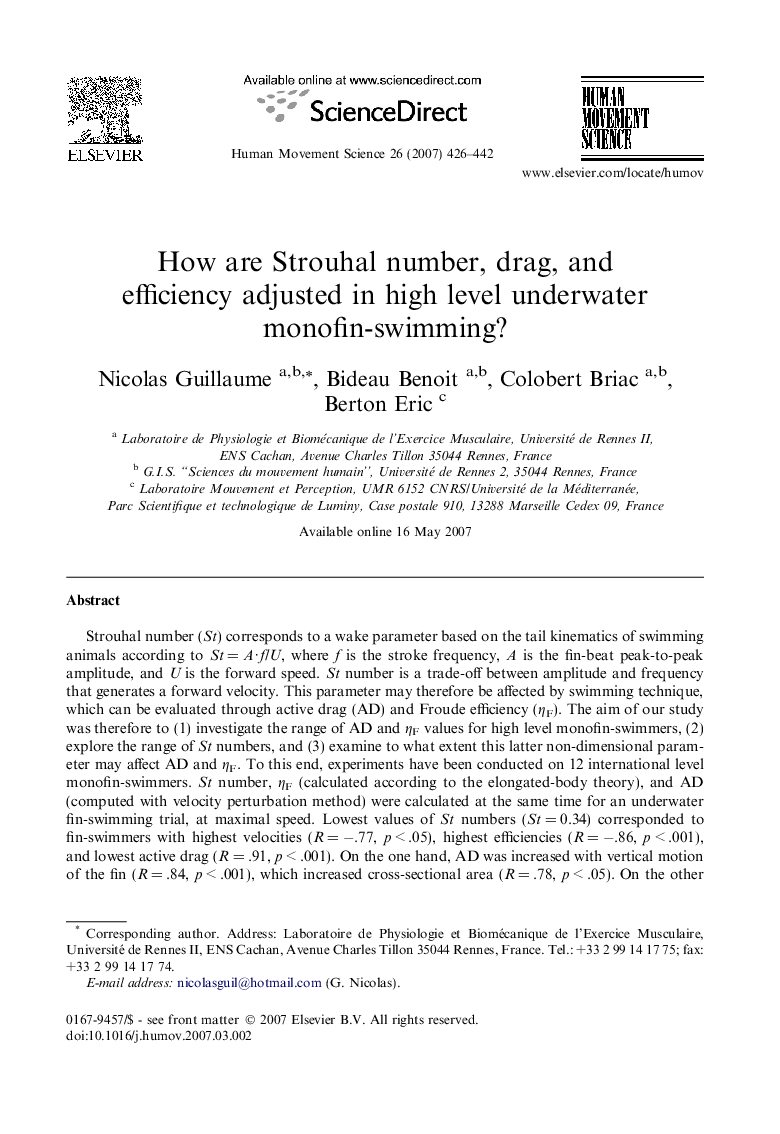| کد مقاله | کد نشریه | سال انتشار | مقاله انگلیسی | نسخه تمام متن |
|---|---|---|---|---|
| 928856 | 922399 | 2007 | 17 صفحه PDF | دانلود رایگان |

Strouhal number (St) corresponds to a wake parameter based on the tail kinematics of swimming animals according to St = A · f/U, where f is the stroke frequency, A is the fin-beat peak-to-peak amplitude, and U is the forward speed. St number is a trade-off between amplitude and frequency that generates a forward velocity. This parameter may therefore be affected by swimming technique, which can be evaluated through active drag (AD) and Froude efficiency (ηF). The aim of our study was therefore to (1) investigate the range of AD and ηF values for high level monofin-swimmers, (2) explore the range of St numbers, and (3) examine to what extent this latter non-dimensional parameter may affect AD and ηF. To this end, experiments have been conducted on 12 international level monofin-swimmers. St number, ηF (calculated according to the elongated-body theory), and AD (computed with velocity perturbation method) were calculated at the same time for an underwater fin-swimming trial, at maximal speed. Lowest values of St numbers (St = 0.34) corresponded to fin-swimmers with highest velocities (R = −.77, p < .05), highest efficiencies (R = −.86, p < .001), and lowest active drag (R = .91, p < .001). On the one hand, AD was increased with vertical motion of the fin (R = .84, p < .001), which increased cross-sectional area (R = .78, p < .05). On the other hand, efficiencies showed a tendency to peak at ηF = 0.82 in a narrow range of St numbers close to 0.4. This St range corresponded to the upper limit of the 0.25–0.4 range usually claimed for maximum efficiency of marine and flying animals. Such results suggest that increasing efficiency and reducing drag improves performance per se (regardless how these parameters are related with St number).
Journal: Human Movement Science - Volume 26, Issue 3, June 2007, Pages 426–442